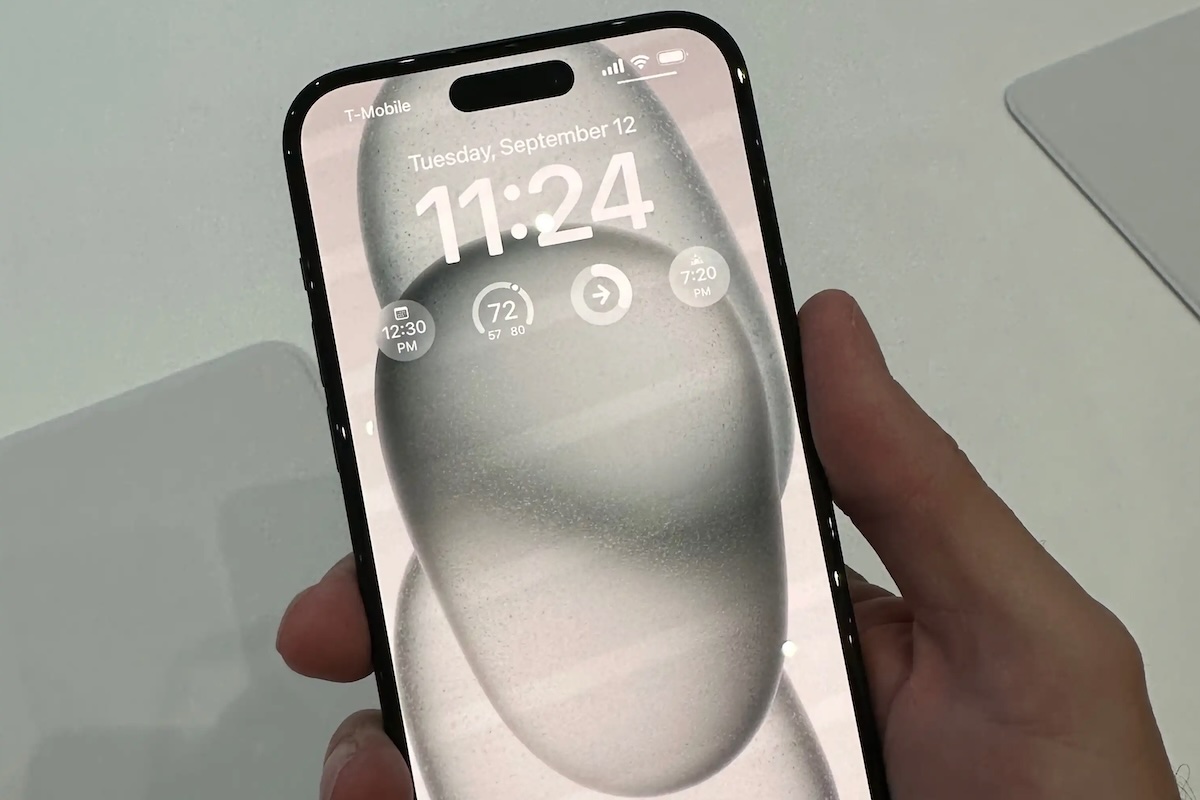
Image: Apple
The old trope that old people are hopelessly illiterate when it comes to technology is somewhat unwarranted. The home computer revolution is decades old at this point, and smartphones have been around for over 15 years. Seniors may not operate their smartphones as adroitly as their grandkids, but they aren’t just sitting around pining for the days of rotary dial phones. Social media has, in particular, provided a way for seniors to more easily keep in touch with family and connect with friends, and smartphones help make it all possible. It’s also an increasingly important part of health-care services.
In other words, seniors need iPhones, too, but they have may have unique needs. They’re often on fixed incomes, and may have difficulty reading small text, or suffer from arthritis or have other accessibility needs. The best iPhone for seniors is one that won’t cost an arm and a leg and will continue to be updated for at least a few years. Beyond that, we’re going to make two recommendations: a small iPhone for seniors who find large phones difficult to carry and manipulate, and a large iPhone for those who need larger text and images.
1. Apple iPhone SE (2022)

Pros
Low price
Small size
Touch ID
Cons
Small screen
Single camera
The iPhone SE is a godsend for seniors or anyone else on a fixed income. Starting at only $429/£429, you get a iPhone with an A15 processor (same as the iPhone 13 and 14). Battery life runs to around 15 hours, so they will need to remember to plug the iPhone in at the end of the day.
Even with just a single lens, the camera is quite good with features like Deep Fusion, for better low-light photography, and Photographic Styles, if they want to get creative.
Some seniors will find Touch ID easier to deal with than Face ID (especially if their previous smartphone was an older iPhone).
The iPhone SE is small. If a senior is coming from an iPhone 8 or older, that size will be familiar and comfortable. However, the small 4.7-inch display may be too small for someone with failing eyesight.
The iPhone SE supports 5G and comes in 64GB, 128GB and 256GB capacities. We’d usually dissuade buyers from the 64GB model if they are likely to take a lot of photos and store music on the device. Since the 128GB model only costs $50/£50 more we recommend the extra storage, but you could instead set them up with an iCloud account for additional storage.
Read our full
Apple iPhone SE (2022) review
2. Apple iPhone 13

Pros
Price
Display size
Face ID
Cons
Older processor, single camera
Not every senior wants such a small iPhone, though. An iPhone with a larger display will be much easier for old eyes to see clearly. There is big and there is bigger though. If it’s the biggest iPhone you want then there is a Plus version of the standard handset with a 6.7-inch screen, but if that is too heavy then the best choice is one of the 6.1-inch iPhones. That could include the iPhone 15, iPhone 14 or iPhone 13.
We’re recommending the iPhone 13 as the top choice here primarily because it represents the best value for money right now. At $599/£599 it costs $200/£200 less than the iPhone 15, and $100/£100 less than the iPhone 14. There isn’t a huge difference between the iPhone 14 and 13 in terms of features, the newer iPhone gets a few improvements to the camera (Action Mode, for on-the-move video making) and the iPhone 14’s Crash Detection feature, but both phones offer the same A15 chip (which is also in the SE). The iPhone 14 has an extra GPU core, but that’s unlikely to make a big difference to a typical user (unless they love gaming).
That processor is more than fast enough for email, checking social media apps, taking pictures, making FaceTime calls, and everything else a senior wants an iPhone for. And it’ll still get several years of iOS software updates.
Face ID might take a little getting used to if the user is used to Touch ID and the Home button, but could prove to be an easier way to secure an iPhone for those with arthritis.
Read our full
Apple iPhone 13 review
3. Apple iPhone 15 Plus

Pros
Large 6.7-inch screen
Lightest large screened iPhone
Cons
Bulky and heavier than smaller iPhones
Price When Reviewed:
€1099
The large display of one of the Plus-sized iPhones will be much easier for old eyes to see clearly. The first Plus model was the iPhone 14 Plus, which Apple introduced in 2022 and continues to sell at a reduced price. It’s much, much cheaper than the Pro Max version of the iPhone, which we think would probably overdeliver unless the user wanted the best phone camera available.
Excluding the iPhone 15 Pro Max, there are two choices with a 6.7-inch screen here: the iPhone 14 Plus and the iPhone 15 Plus. Again, you can save $100/£100 by buying the iPhone 14 Plus (at $799/£799) instead of the newer iPhone 15 Plus (at $899/£899). This time we recommend spending the extra money if there is budget available because the iPhone 15 generation is a leap ahead of the iPhone 14 in terms of processor and camera. Another reason to choose the iPhone 15 Plus: it is lighter than the iPhone 15 Pro Max and the iPhone 14 Plus.
But if you’d prefer to save the money we don’t think you would be disappointed with the iPhone 14 Plus.
Author: Karen Haslam, Editor

Macworld editor since 2008, Karen has worked on both sides of the Apple divide, clocking up a number of years at Apple’s PR agency prior to joining Macworld two decades ago.
Karen’s career highlights include interviewing Apple’s Steve Wozniak and discussing Steve Jobs’ legacy on the BBC. Her focus is Mac, but she lives and breathes Apple.
>>> Read full article>>>
Copyright for syndicated content belongs to the linked Source : MacWorld – https://www.macworld.com/article/334307/the-best-iphone-for-seniors.html































